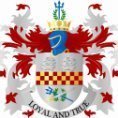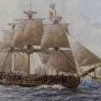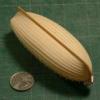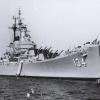-
Posts
5,945 -
Joined
-
Last visited
About BANYAN
- Birthday 06/20/1955
Profile Information
-
Gender
Male
-
Location
Melbourne, Victoria
-
Interests
Family, Fishing, Woodwork and Photography
Contact Methods
-
Skype
pat_sma
Recent Profile Visitors
-
 michael mott reacted to a post in a topic:
HMCSS Victoria 1855 by BANYAN - 1:72
michael mott reacted to a post in a topic:
HMCSS Victoria 1855 by BANYAN - 1:72
-
 thibaultron reacted to a post in a topic:
Billy 1938 by Keith Black - 1:120 Scale - Homemade Sternwheeler
thibaultron reacted to a post in a topic:
Billy 1938 by Keith Black - 1:120 Scale - Homemade Sternwheeler
-
 Keith Black reacted to a post in a topic:
HMCSS Victoria 1855 by BANYAN - 1:72
Keith Black reacted to a post in a topic:
HMCSS Victoria 1855 by BANYAN - 1:72
-
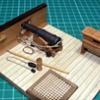
HMCSS Victoria 1855 by BANYAN - 1:72
BANYAN replied to BANYAN's topic in - Build logs for subjects built 1851 - 1900
Great to hear from you Michael, and many thanks for your kind thoughts. Like you, I am returning to a long suffering project which I hope to (re)start in earnest tomorrow with a good dust and clean up. We had our coldest Christmas in 20 odd years yesterday at 15degC so looking forward to some warmth soon Hope you had a wonderful Christmas and my best wishes for a great 2026. Looking forward to some updates on that beautiful model of yours. BTW, those third hands you produced are one of the most used in my workshop; still much appreciated. cheers Pat- 1,013 replies
-
- gun dispatch vessel
- victoria
-
(and 2 more)
Tagged with:
-
 BANYAN reacted to a post in a topic:
Carving from Belgorod
BANYAN reacted to a post in a topic:
Carving from Belgorod
-
 Canute reacted to a post in a topic:
Billy 1938 by Keith Black - 1:120 Scale - Homemade Sternwheeler
Canute reacted to a post in a topic:
Billy 1938 by Keith Black - 1:120 Scale - Homemade Sternwheeler
-
 michael mott reacted to a post in a topic:
HMCSS Victoria 1855 by BANYAN - 1:72
michael mott reacted to a post in a topic:
HMCSS Victoria 1855 by BANYAN - 1:72
-
 Ryland Craze reacted to a post in a topic:
Billy 1938 by Keith Black - 1:120 Scale - Homemade Sternwheeler
Ryland Craze reacted to a post in a topic:
Billy 1938 by Keith Black - 1:120 Scale - Homemade Sternwheeler
-
 Glen McGuire reacted to a post in a topic:
HMCSS Victoria 1855 by BANYAN - 1:72
Glen McGuire reacted to a post in a topic:
HMCSS Victoria 1855 by BANYAN - 1:72
-
 Keith Black reacted to a post in a topic:
HMCSS Victoria 1855 by BANYAN - 1:72
Keith Black reacted to a post in a topic:
HMCSS Victoria 1855 by BANYAN - 1:72
-

HMCSS Victoria 1855 by BANYAN - 1:72
BANYAN replied to BANYAN's topic in - Build logs for subjects built 1851 - 1900
Merry Christmas to you also Bob, I hope it is a safe and joyous day. cheers Pat- 1,013 replies
-
- gun dispatch vessel
- victoria
-
(and 2 more)
Tagged with:
-
 Keith Black reacted to a post in a topic:
Billy 1938 by Keith Black - 1:120 Scale - Homemade Sternwheeler
Keith Black reacted to a post in a topic:
Billy 1938 by Keith Black - 1:120 Scale - Homemade Sternwheeler
-
 Keith Black reacted to a post in a topic:
Cangarda 1901 by KeithAug - Scale 1:24 - Steam Yacht
Keith Black reacted to a post in a topic:
Cangarda 1901 by KeithAug - Scale 1:24 - Steam Yacht
-
 BANYAN reacted to a post in a topic:
Billy 1938 by Keith Black - 1:120 Scale - Homemade Sternwheeler
BANYAN reacted to a post in a topic:
Billy 1938 by Keith Black - 1:120 Scale - Homemade Sternwheeler
-
 BANYAN reacted to a post in a topic:
Loreley 1884 by Ilhan Gokcay - 1/75 - Scale Steam Yacht
BANYAN reacted to a post in a topic:
Loreley 1884 by Ilhan Gokcay - 1/75 - Scale Steam Yacht
-

HMCSS Victoria 1855 by BANYAN - 1:72
BANYAN replied to BANYAN's topic in - Build logs for subjects built 1851 - 1900
Glad you did Steven, quite an amount of small incidental and/or supplemental detail about the vessel is dispersed throughout the state, records offices and personal collections. IK am sure I have missed, or I am not aware of many others, so I very much appreciate pointers such as yours. Have a safe and happy Christmas and the best of modelling wishes for 2026. cheers Pat- 1,013 replies
-
- gun dispatch vessel
- victoria
-
(and 2 more)
Tagged with:
-
 BANYAN reacted to a post in a topic:
Pomeranian Rahschlup 1846 by wefalck – 1/160 scale – single-masted Baltic trading vessel
BANYAN reacted to a post in a topic:
Pomeranian Rahschlup 1846 by wefalck – 1/160 scale – single-masted Baltic trading vessel
-
 BANYAN reacted to a post in a topic:
Cangarda 1901 by KeithAug - Scale 1:24 - Steam Yacht
BANYAN reacted to a post in a topic:
Cangarda 1901 by KeithAug - Scale 1:24 - Steam Yacht
-
 BANYAN reacted to a post in a topic:
Cangarda 1901 by KeithAug - Scale 1:24 - Steam Yacht
BANYAN reacted to a post in a topic:
Cangarda 1901 by KeithAug - Scale 1:24 - Steam Yacht
-

Interesting ship related book with interesting signature inside
BANYAN replied to alde's topic in Nautical/Naval History
Wow, nice catch. cheers Pat -
 BANYAN reacted to a post in a topic:
Interesting ship related book with interesting signature inside
BANYAN reacted to a post in a topic:
Interesting ship related book with interesting signature inside
-

HMCSS Victoria 1855 by BANYAN - 1:72
BANYAN replied to BANYAN's topic in - Build logs for subjects built 1851 - 1900
Thanks everyone for the very kind sentiments and encouragement. @Louie da fly thanks, yep aware of that item, but I really think they have that placarded/identified wrongly. I think it is much too large to have been used onboard. More likely is that it was a swivel link used on the permanent mooring buoy allocated to her in Hobson's Bay. Appreciate the pointer. cheers Pat- 1,013 replies
-
- gun dispatch vessel
- victoria
-
(and 2 more)
Tagged with:
-
 BANYAN reacted to a post in a topic:
HMCSS Victoria 1855 by BANYAN - 1:72
BANYAN reacted to a post in a topic:
HMCSS Victoria 1855 by BANYAN - 1:72
-
 BANYAN reacted to a post in a topic:
HMCSS Victoria 1855 by BANYAN - 1:72
BANYAN reacted to a post in a topic:
HMCSS Victoria 1855 by BANYAN - 1:72
-
 BANYAN reacted to a post in a topic:
Bristol Pilot Cutter by michael mott - 1/8 scale - POF
BANYAN reacted to a post in a topic:
Bristol Pilot Cutter by michael mott - 1/8 scale - POF
-
Great to see you back online here Michael, have been missing your updates. Hope all goes well with your vision and you can find some time to complete the interior of your build. cheers Pat
- 2,215 replies
-

HMCSS Victoria 1855 by BANYAN - 1:72
BANYAN replied to BANYAN's topic in - Build logs for subjects built 1851 - 1900
Very many thanks to all for your very kind messages. The medical team was great, I was up and about that evening (after a four hour procedure), eating normally and getting about the next day, and released from hospital the next. It never ceases to amaze me what these health 'magicians' can do these days. The intention is to now prove my rigging plan by trying it on the model. This should help to resolve some of the remaining issues I have and establish whether some of the leads etc I have used were/are practical. This is not to say the plan is the 'actual' configuration used in the ship itself, but this process should lead to a reasonable 'representative' rigging and belaying plan. Once I start, I encourage you all, especially the more experienced modellers and mariners, to challenge my assumptions. In the interim I am preparing myself for the onslaught of Christmas, especially with my three gorgeous granddaughters (or should I call them 'organised chaos' ' cheers Pat- 1,013 replies
-
- gun dispatch vessel
- victoria
-
(and 2 more)
Tagged with:
-
What a great result Richard, can't wait to see the completed product. Nice work. cheers Pat
-

HMCSS Victoria 1855 by BANYAN - 1:72
BANYAN replied to BANYAN's topic in - Build logs for subjects built 1851 - 1900
Hello all, unfortunately, after my re-start back in June, my modelling ground to a halt yet again with some medical issue I needed to attend to. I have had a bit of a 'C' scare but all is clear now having undergone some colorectal surgery. The doc has given me the all clear (completely clear) so, after some recouperation during the Christmas break, I will be back to the work bench . One positive from this was that, between the various procedures etc, I was able to find some time to complete the first draft of Volume 5 (Rigging and Belaying Plan) of my Book about Victoria. I now have a working basis from which to test rig the model and iron out any issues I encounter, and then update the book. Unfortunately, everything else ground to a halt, including redrawing the revised sheer drawing (to remove a major distortion in the original drawing). Unfortunately, this has identified an error in the model's hull ()depth of hold) which (at scale) is about a centimetre or slightly more too shallow, but only the 'rivet counters' will notice. In the meantime I am preparing some CAD files to experiment having the upper masts and yards CNC turned. If this works, which I am pretty sure it will, I can start assembling the spars and get on with the rigging. Many thanks to @JohnOz for his kind offer to do this. BTW, John should be encourage to show some of his fine engineering and 'smithing' work, especially his cannons, they are a true work of art. I hope everyone has a wonderful Christmas/festive break. cheers Pat- 1,013 replies
-
- gun dispatch vessel
- victoria
-
(and 2 more)
Tagged with:
About us
Modelshipworld - Advancing Ship Modeling through Research
SSL Secured
Your security is important for us so this Website is SSL-Secured
NRG Mailing Address
Nautical Research Guild
237 South Lincoln Street
Westmont IL, 60559-1917
Model Ship World ® and the MSW logo are Registered Trademarks, and belong to the Nautical Research Guild (United States Patent and Trademark Office: No. 6,929,264 & No. 6,929,274, registered Dec. 20, 2022)
Helpful Links
About the NRG
If you enjoy building ship models that are historically accurate as well as beautiful, then The Nautical Research Guild (NRG) is just right for you.
The Guild is a non-profit educational organization whose mission is to “Advance Ship Modeling Through Research”. We provide support to our members in their efforts to raise the quality of their model ships.
The Nautical Research Guild has published our world-renowned quarterly magazine, The Nautical Research Journal, since 1955. The pages of the Journal are full of articles by accomplished ship modelers who show you how they create those exquisite details on their models, and by maritime historians who show you the correct details to build. The Journal is available in both print and digital editions. Go to the NRG web site (www.thenrg.org) to download a complimentary digital copy of the Journal. The NRG also publishes plan sets, books and compilations of back issues of the Journal and the former Ships in Scale and Model Ship Builder magazines.



